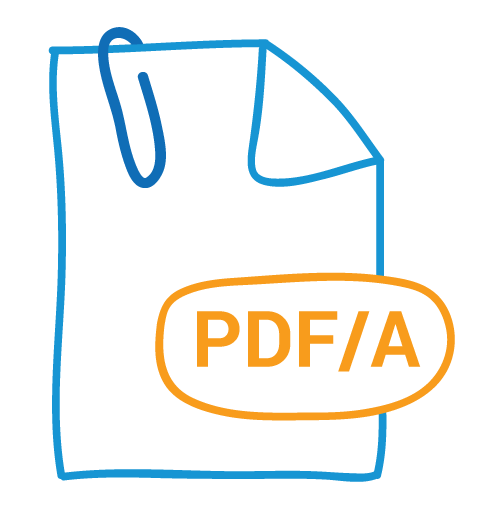 Why bother to save something, if you cannot open it properly later on?
Why bother to save something, if you cannot open it properly later on?
Of course you understand this, but have you done anything to put it into practice?
Whether we are talking about office files, e-mails or even webpages: if you want to be sure that you can retrieve the information, that you can open it and that it still looks the way it did when you saved it, then your file has to meet certain conditions... And PDF/A (PDF/Archive) is the perfect file type to meet them!
What is PDF/A?
PDF/A is a PDF format containing extra restrictions and assumptions. These standards are set in ISO terms, like PDF/A-1 = ISO 19005-1, PDF/A-2 = ISO 32000-1 of PDF/A3=ISO 32000-2. There are way more standardized PDF formats like PDF/UA and PDF-X. I will speak about different PDF standards in another article.
Requirements for long term storage
The following conditions are important for long term storage and these are exactly the characteristics of PDF/A.
1. Device independent
You want to be sure that your file can be opened on several devices. Ten years ago, you probably only opened your files on your desktop. Nowadays, people also open them on devices as laptops, tablets and mobile phones. We cannot imagine with what sort of device we will open our files in another ten years. Therefore, use PDF! The PDF format is developed to be device independent. So, whatever device is going to be invented in the future: it will be able to open PDF files.
2. Self Contained
A PDF/A contains all information needed to display the file as it was originally created. The file has information about the text, images, graphs, font and color. Besides, PDF/A has the restriction that references to external sources are prohibited, since by the time the documents is reopened, the source might not exist any longer.
3. Self Documented
Metadata (information that describes the file itself) can be added to a PDF/A. Think here about the author, creation date, conversion date, keywords, title, description, reference number, etc. Metadata could be for instance of high value when you are looking for your file, using certain search terms. Metadata can be added via PDF's standard metadata or through using a XMP file. I will tell more about XMP later on.
4. Transparent
PDF/A files are not complex formats. They are easy to analyse and it is easy to understand the structure. This is for instance a huge benefit for current and future PDF readers.
Not only a 'best practice' for archivists
Within your company (but maybe also at home) there are numerous documents of which you want to be sure that you can still open them in 10 years. Think about contracts, appointments, terms, important e-mail conversations, etc. To be assured of this, your company not necessarily has to meet a NEN norm XYZ or something like that, but saving your files as PDF/A is a solid first step. Of course that also applies to important e-mail conversations.
And no, creating a PDF/A is no 'rocket science'. With new or existing office files this can be easily done by yourself. To do so: select 'save as', choose *.pdf and then select one of the ISO terms stated above.
Do I also need to save draft versions?
My answer to that question will always be yes! How do you know that version is indeed a draft version? It might as well be your last.
Is PDF/A the only option for long term storage?
There are other archive formats, like TIFF, that can be used for long term storage. However, PDF/A is a more modern, standardized format with multiple functional advantages. The differences between PDF/A and the other options will be discussed in a blog later.


 English (UK)
English (UK)  Nederlands
Nederlands